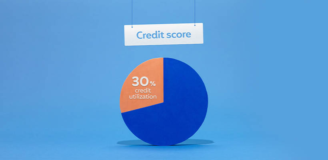HELOC in the US: How It Works and Why It Might Be a Smart Option
Learn what a HELOC is, how it works, and how to apply for this smart credit option using your home equity in the United States.
How to Use a HELOC Intelligently to Finance Your Projects

A Home Equity Line of Credit, or simply HELOC, is a financial product that allows homeowners in the United States to borrow money using the equity they’ve built up in their property. It works much like a credit card, but instead of a fixed loan amount, the borrower receives a line of credit they can draw from as needed, up to a pre-approved limit.
What makes it “smart” is its flexibility, relatively low interest rates compared to personal loans or credit cards, and the fact that interest is only charged on the amount actually used, not the entire credit line.
Continue reading to learn more about applying for this credit option. Check it out!
How a HELOC Works in Practice
When someone applies for a HELOC, the lender assesses the amount of equity available in their home. This is calculated by subtracting the outstanding mortgage balance from the home’s current market value.
For example, if your home is worth $400,000 and you owe $250,000 on your mortgage, your equity is $150,000. Most lenders allow homeowners to borrow up to 85% of that equity, minus the mortgage balance.
Once approved, the borrower receives access to a credit line for a set draw period, usually 5 to 10 years. During this time, they can borrow money, repay it, and borrow again, just like with a credit card.
Most HELOCs require interest-only payments during the draw period, which can keep monthly payments relatively low.
After the draw period ends, the repayment period begins, which typically lasts 10 to 20 years, during which the borrower must repay both the principal and interest.
Common Uses of a HELOC
Many Americans use HELOCs for home improvements, which is one of the smartest ways to leverage this kind of credit.
Renovations and upgrades often increase the value of a property, meaning the money borrowed can ultimately pay off in the long term by raising the home’s resale value.
Others use HELOCs to pay for major life expenses, such as a child’s college tuition, unexpected medical bills, or even to start a small business. In some cases, people use HELOCs to consolidate higher-interest debt, such as credit card balances, allowing them to reduce their overall interest payments and simplify their finances.
It’s important, however, to use a HELOC wisely. Because your home is used as collateral, failing to repay the borrowed amount can lead to foreclosure.
That’s why financial advisors often recommend using HELOCs for purposes that will generate long-term value, rather than for short-term spending.
How to Apply for a HELOC in the United States
The process of applying for a HELOC in the U.S. is relatively straightforward, but it does require some preparation.
First, the homeowner should evaluate how much equity they have and check their credit score, as most lenders require a credit score of at least 620 to qualify. A higher score will increase the chances of approval and potentially secure better interest rates.
Next, the homeowner should compare offers from different banks and credit unions. Some institutions may offer lower interest rates or waive certain fees, so it’s essential to shop around.
Once a lender is selected, the application process begins, which typically includes submitting financial documents such as proof of income, tax returns, mortgage statements, and proof of homeownership.
After the application is reviewed, the lender will usually conduct a home appraisal to confirm the property’s market value. If all goes well, the line of credit is approved, and the homeowner can begin using it as needed.
Final Considerations
HELOCs can be a smart and effective way to manage large expenses or invest in home improvements, but they are not without risk.
Because your home serves as collateral, it’s essential to have a solid repayment plan in place and to avoid using the funds for non-essential spending.
In summary, HELOCs offer flexibility, potentially lower interest rates, and the ability to access large sums of money without selling your home or liquidating other assets. For many homeowners, it’s a smart financial tool, when used responsibly.





